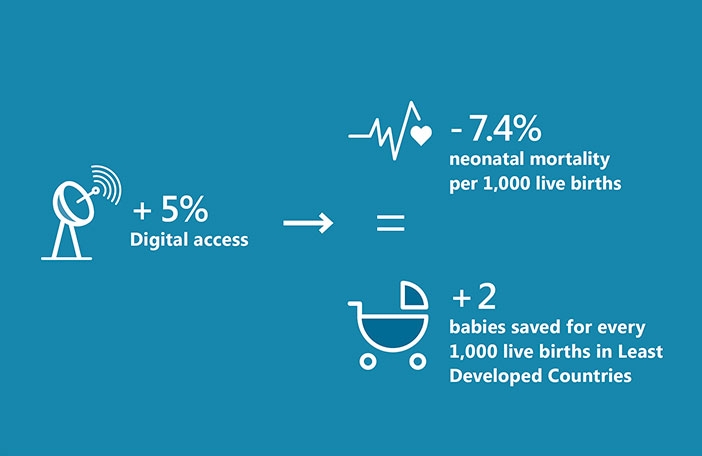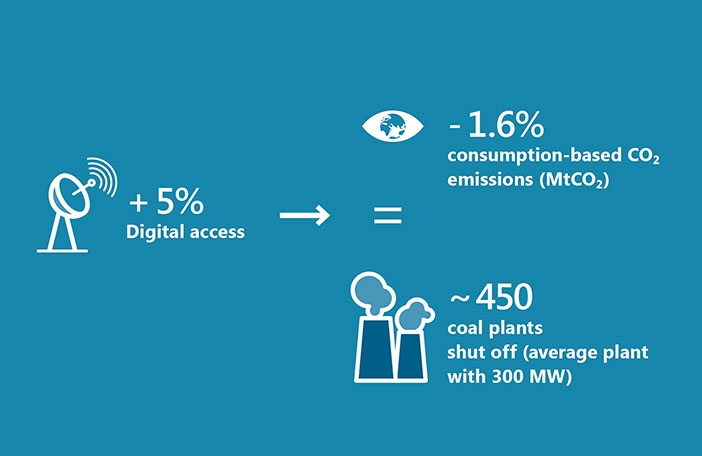

Good health and well-being
SDG 3 on good health and well-being is the social SDG with the strongest correlation link between access and achievement, and the second-strongest overall.
Progress towards SDG 3 achievement is measured by 14 indicators, 9 of which have a positive correlation with digital access (the relationship is unclear for the other 5, while none has a negative relation with access).
E-health is the most powerful solution beyond connectivity contributing to the SDGs: e-health solutions include remote diagnostics, health data storage, big data health analytics, personalized medicine, wearables and user devices.
The consistency of positive correlations of digital access with several health indicators is a first signal towards causality, as powerfully illustrated by the reduction in neonatal mortality that can be enabled by digital access: our research found that a 5% increase in access would translate into a 7.4% decrease in neonatal mortality. In Least Developed Countries, this would mean 2 newborns saved for every 1,000 live births.
Back






